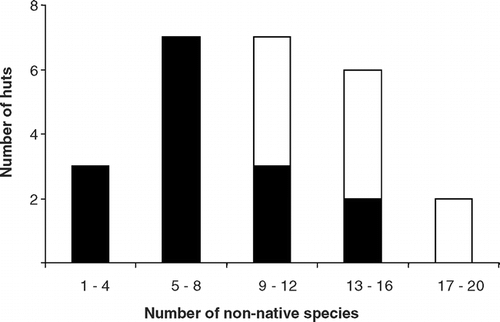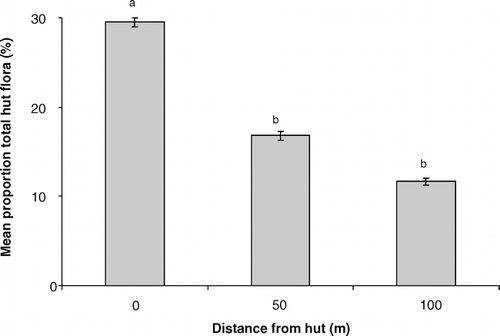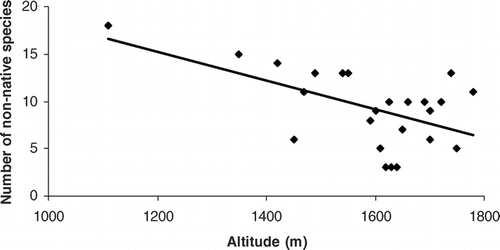Figures & data

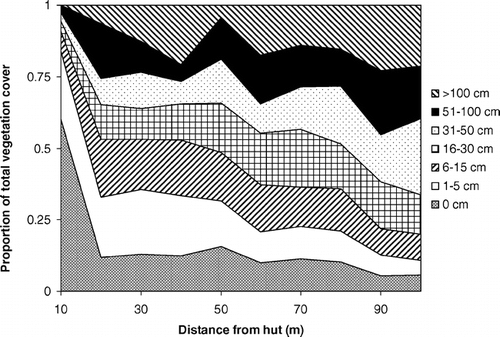
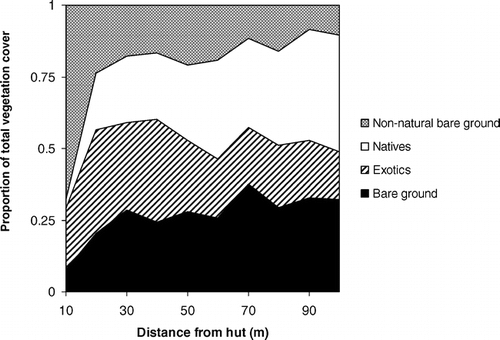
Table 1 Frequency of non-native species recorded at backcountry huts (n = 25), within the study landscape (FIS database, n ≈ 1300 quadrats and point localities) and ranked abundance as per CitationMcDougall et al. (2005). The “residence time” of non-native species was assessed by reference to CitationJohnston and Pickering (2001b), which contains a listing of the period that non-native species were first recorded in the Australian Alps between 1898 and 1998. Life/growth form: AH = annual herb, PH = perennial herb, AG = annual grass, PG = perennial grass, PS = perennial sedge, S = shrub, T = tree. Mode of dispersal: A = ant; B = animal; H = water; V = vegetative; W = wind.
